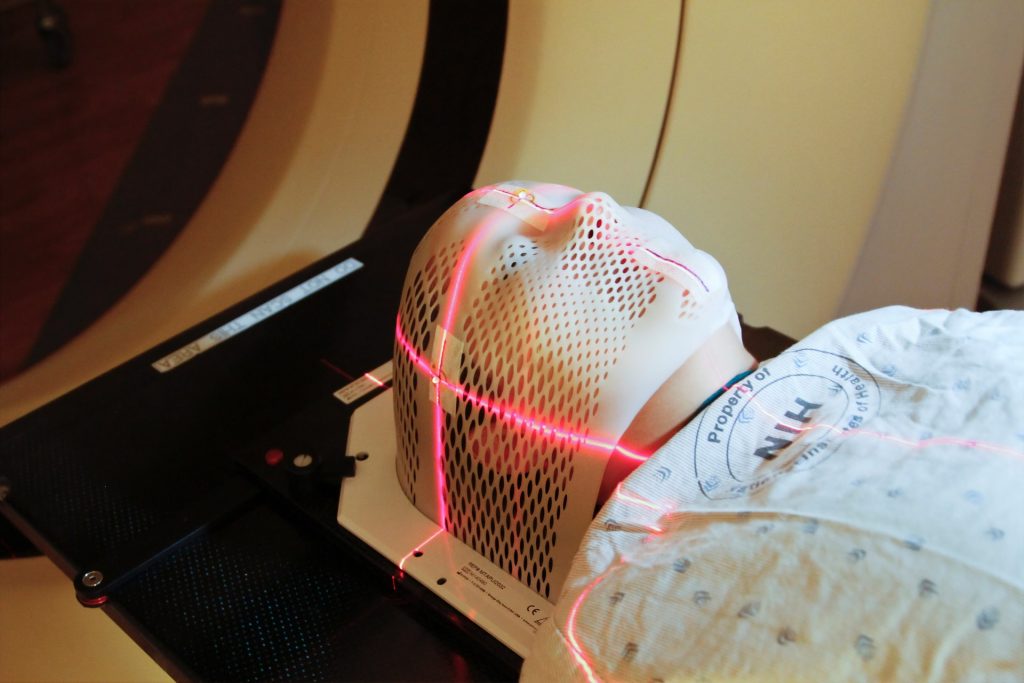
Patients with a small cranial nerve tumour that can cause hearing loss, vertigo, imbalance and ringing in the ears have typically been watched rather than proactively treated, as the risks of early intervention were thought to outweigh the benefits. Now a study shows that even those patients benefit significantly from non-invasive stereotactic radiosurgery, led by UVA Health physicians has found. The findings were reported in Neurosurgery.
Doctors typically treat larger forms of the tumours, called vestibular schwannomas, while taking a “watch and wait” approach to smaller tumours that aren’t causing appreciable problems. But the new research, from UVA Health neurosurgeon Jason Sheehan, MD, PhD, and collaborators, could change how asymptomatic schwannomas are managed. Their findings demonstrated that stereotactic radiosurgery – a highly targeted form of radiation therapy – can prevent small tumours from growing over time while at the same time sparing patients from potentially irreversible problems in the future.
“This study and our recent Vestibular Schwannoma International Study of Active Surveillance versus Stereotactic Radiosurgery [VISAS] trial demonstrate that radiosurgery affords effective and durable tumour control while more often avoiding the neurological complications that come from watching a vestibular schwannoma,” Sheehan said. “Over time, Gamma Knife radiosurgery bends the curve of growth and problems that commonly arise from watching even the smallest of vestibular schwannomas.”
About vestibular schwannomas
Vestibular schwannomas are growths on a cranial nerve that connects the brain and inner ear. This nerve transmits information about head movements, helps us control our balance and allows us to hear. The growths, however, can disrupt the nerve’s important functions, causing hearing loss, unsteadiness, headaches, tinnitus (ringing in the ear), facial numbness/paralysis and other problems.
Seeking to improve care for patients with these tumours, Sheehan and his team performed a trial through the International Radiosurgery Research Foundation looking at 261 adults with the smallest category of vestibular schwannomas. These were usually picked up early, and the patients often were high functioning and had the most to lose from tumour growth over time. Of the study participants, 182 received stereotactic radiosurgery, while 79 did not.
The patients who underwent radiosurgery using the Gamma Knife system showed consistently better tumour control over time. In this group, 99% of the patients’ tumours either stayed the same size, grew very little (less than 25%) or shrank. This was true at 3 years, 5 years, and 8 years. Only one patient’s tumour significantly increased in size.
Tumour control was much worse among those who didn’t receive radiosurgery: 37% saw their tumours grow significantly at 3 years, 50% at five years, and 67% at eight years.
That difference was seen plainly in the symptoms the patients experienced. Radiosurgery was associated with a 54% lower rate of tinnitus, a 51% lower rate of cranial nerve deterioration and an 83% lower rate of vestibular dysfunction that causes dizziness and loss of balance.
Even with Gamma Knife radiosurgery to treat the tumour arising from this very delicate neural structure, hearing was preserved similarly in both groups.
Sheehan, an expert in stereotactic radiosurgery and brain tumours, urges physicians to take note of the findings because tumour symptoms are often irreversible as the tumour grows. Acting early, before symptoms develop, could greatly improve patients’ long-term quality of life, he says.
“In brain surgery, particularly involving the hearing and balance nerve, our approach must be exceedingly refined,” he said. “This study shows that Gamma Knife radiosurgery substantially improves the future trajectory of vestibular schwannoma patients.”

